Introduction
Residential land use encompasses various categories characterized by differences in housing density, size, and intended use. These distinctions have broader impacts on urban development, sustainability, and the social fabric of communities. The traditional model of single-family homes is being reevaluated in light of its contribution to urban sprawl and its associated environmental impacts.
Compact, mixed-use communities are now seen as a more efficient and sustainable approach to land use. Innovative strategies, such as pattern books for house-scale attainable housing, are emerging to address these challenges. The evolution of residential land use is a critical component of sustainable urban planning, balancing the need for individual household space with the broader goals of environmental stewardship and community well-being.
In this article, we will explore the different types of residential land use, the role of zoning regulations, the importance of affordable housing, and the impact of design review ordinances.
Types of Residential Land Use
Residential land use encompasses various categories characterized by differences in dwelling density, size, and intended use. The differences between these residential categories are not only in name; they represent wider effects on urban growth, sustainability, and the social structure of societies. A single-family home, for instance, is defined as a standalone residential structure meant for one household, which can range from a fully detached house to semi-detached, row houses, or townhouses, as long as they have separate utilities and are not vertically aligned with other homes.
This conventional approach to growth, with approximately 80 to 90 percent of developable land in American cities designated for detached single-family residences, is under review due to its role in urban sprawl and the resulting environmental effects. Urban sprawl accounts for a significant portion of greenhouse gas emissions, exacerbating the climate crisis through increased travel distances, car dependency, and loss of natural carbon sinks. In contrast, the planning approach that encourages compact, mixed-use communities can lead to more efficient land use, reduced travel distances, and overall better health outcomes and affordability.
Some innovative strategies are emerging to tackle these challenges, such as the development of pattern books for house-scale attainable dwellings in specific zones. These guidelines aim to streamline the construction of duplexes, triplexes, and quadplexes that blend harmoniously into existing neighborhoods, contribute positively to the public realm, and avoid the appearance of small apartment complexes. The focus on creating safe and attractive streetscapes, while minimizing parking impacts, is a step towards a more sustainable and inclusive urban fabric. Moreover, initiatives like the USPS's pilot program to repurpose surplus properties for housing underscore the importance of utilizing existing resources to mitigate housing shortages.
The evolution of residential land use is thus a critical component of sustainable urban planning, balancing the need for individual household space with the broader goals of environmental stewardship and community well-being.
Single-Family Residential Land Use
A single-family residential structure is a standalone building designed for occupation by one household, offering privacy and individuality through unique amenities like private kitchens and separate utilities. It's crucial to understand that the term 'single-family' doesn't relate to the number of inhabitants but to the concept of a single household unit. The U.S. Census Bureau expands this definition to include various dwelling types such as fully detached, semi-detached, row houses, and townhouses, with the condition that these homes are separated by a ground-to-roof wall and do not share essential systems with neighboring units.
The regulation of single-family homes, particularly in California's diverse landscape of over 39 million people and numerous municipalities, presents a complex regulatory environment. With strict land use practices in many jurisdictions, comprehending the implications of land use becomes a crucial factor in urban and suburban development. These land use regulations have far-reaching effects, including implications for climate action, as urban sprawl contributes significantly to greenhouse gas emissions by encouraging longer travel distances and greater car dependency.
Recent changes in land use regulations, similar to those in Minneapolis, have demonstrated the significance of inclusive conversations, especially with the societies impacted by restrictive zoning. As we delve into the notion of single-family homes and their role in the wider urban fabric, it is crucial to acknowledge the multifaceted impact of zoning regulations on affordability, community inclusivity, and environmental sustainability.
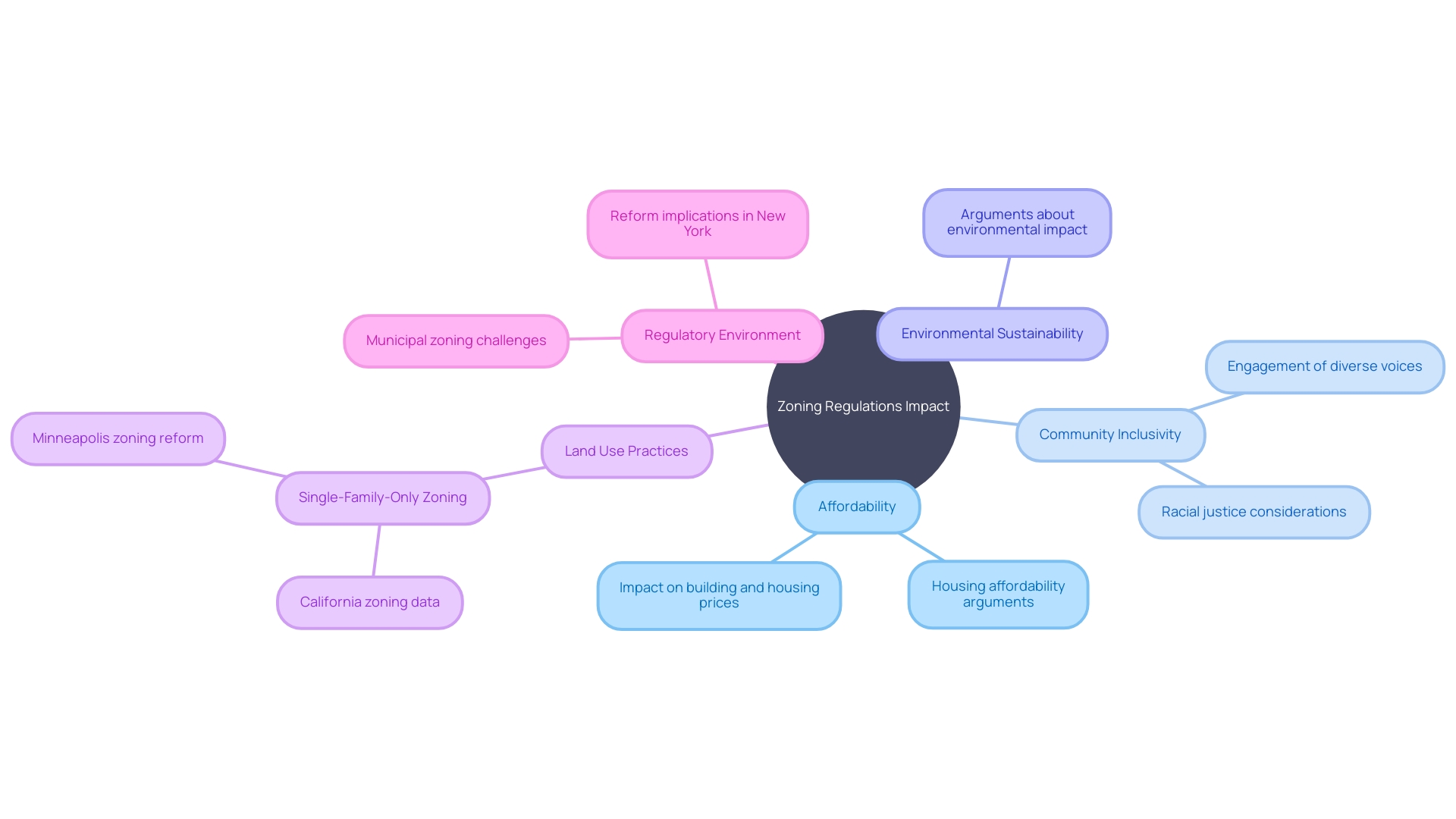
Multifamily Residential Land Use
Multifamily residential projects are an essential solution for urban and suburban areas facing shortages in residential options, as they maximize space by accommodating multiple families within a single land parcel. Involving a range of dwelling options, like apartments, townhouses, and condominiums, these projects play a crucial role in tackling the urgent requirement for accommodation that has built up over years of insufficient construction. With an estimated shortfall of 4 million homes, and potentially millions more needed for future growth, multifamily residential areas are key to sustaining higher population densities in a sustainable manner.
Urban sprawl contributes to a significant portion of greenhouse gas emissions, exacerbating the climate crisis by promoting longer commutes, increased car reliance, and inefficient land and resource use. In contrast, multifamily residential areas encourage compact living, reducing travel distances, and promoting healthier lifestyles with more physical activity. These areas also offer the potential for more cost-effective living options and energy-efficient building practices that conserve land and water resources.
Despite their many benefits, current state and local land use regulations often favor detached single-family homes, which dominate an estimated 80 to 90 percent of developable land in American cities. This trend is gradually shifting, with innovative land use reforms and multifamily developments that utilize existing urban infrastructure to create living opportunities. Examples include converting retail spaces, such as a standalone grocery store in Brooklyn, into mid rise units while retaining ground-floor commercial use, and transforming parking lots near transit hubs into residential spaces.
The Yardi Matrix Multifamily Construction Starts report indicates a change in the real estate market, with affordable dwelling starts increasing from 8.4% to 13.4% and single-family rentals rising from 0.9% to 5.8% over the past decade. This shift reflects a growing trend towards denser, more affordable, and sustainable living options. Furthermore, apartments are becoming smaller, with the average size of new apartments shrinking by 54 square feet since 2012, as developers aim to meet the affordability challenge and maximize their return on investment.
The approach to multifamily residential land use is multifaceted, necessitating the consideration of climate action, affordability of accommodation, and the overall wellbeing of urban and suburban societies. Therefore, multifamily projects are not just a reaction to the housing crisis but also a tactical step towards sustainable living that corresponds with contemporary urban planning principles.
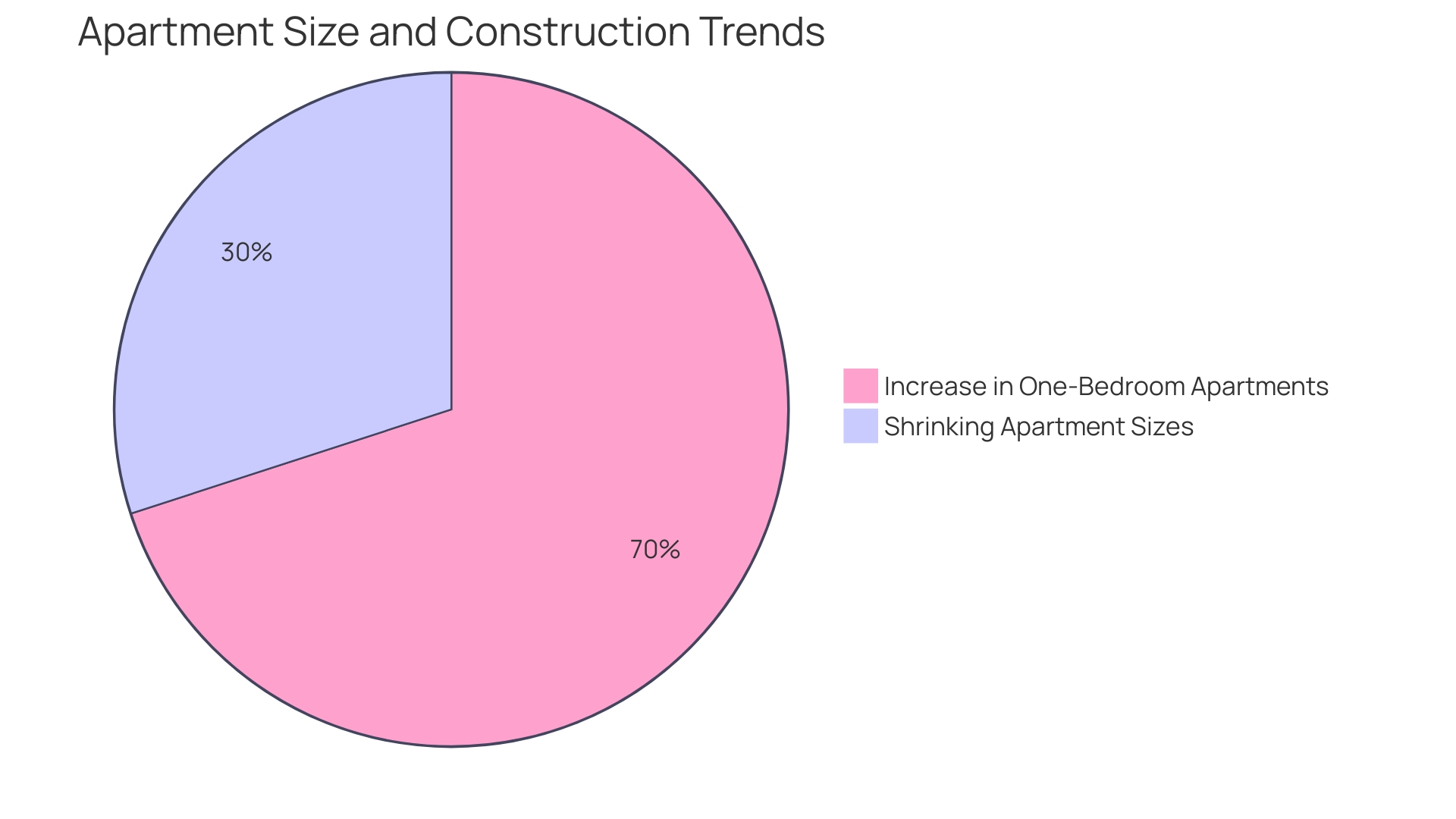
Mixed-Use Residential Land Use
Mixed-use residential land use is not just about blending living spaces with commercial establishments; it's about crafting thriving, walkable communities that epitomize the essence of convenience and sustainable living. Take the Gateway at Millbrae Station in California, for example. This visionary project, developed by Republic Urban Properties and designed by Form4 Architecture, exemplifies a transit-oriented, pedestrian-friendly neighborhood. Spanning over a 17-acre site, the project accommodates a mix of market-rate and affordable residences, offices, a hotel, retail stores, and art-filled open spaces, all conveniently located near the Millbrae BART station.
Envisioned as a 500,000-square-foot miniature metropolis, the Gateway harbors a significant office building with a pedestrian retail podium, enhancing the mixed-use experience. The structure's design, featuring planted terraces and an upper garden, not only enhances the aesthetic appeal but also introduces green spaces into the urban environment. SamTrans has acknowledged the attractiveness of such a design, choosing it for its headquarters, indicating a transition towards mixed-use projects in the aftermath of the pandemic where the combination of living, working, and leisure becomes seamless.
Acknowledging the same ethos, the Urban Guild awarded the Spoke Street Shophomes developed by Dryline for excellence in mixed-use design. A prime example of innovation, these three-story houses integrate commercial spaces on the ground floor with residential quarters above, nestled in the burgeoning Wheeler District town center.
The appeal of mixed-use areas arises from their capability to accommodate modern desires for convenience, productivity, and enjoyment. As reported by industry experts, these developments are not only meeting consumer needs but are also providing stable revenue streams for developers and investors in a volatile rental market. This is because they house diverse asset classes, from retail to office spaces, and even hotels, offering varied income sources.
To ensure the success of these societies, the incorporation of technology is vital. According to Jason Lund of JLL Property Management, Wi-Fi and cellular connectivity are foundational for building a cohesive experience. They enable residents and visitors to navigate the area smoothly, which is further enhanced by property-specific apps that enhance the experience.
Investing in public facilities has therefore become a crucial real estate strategy, especially in the wake of the global pandemic. People's perception of their homes has evolved; they now seek spaces that serve beyond basic living needs. Community amenities extend past the tangible attributes, fostering an environment conducive to a more connected and enriched lifestyle.
From an ecological perspective, urban sprawl is a significant contributor to greenhouse gas emissions. Statewide land reform is seen as a crucial climate action tool. By advocating for compact, mixed-use neighborhoods, we can diminish travel distances, decrease reliance on cars, and consequently, diminish our carbon footprint. These neighborhoods not only contribute to reducing climate change but also improve affordability of homes, health results, and efficiency of resources.
In summary, mixed-use residential areas are not only about the coexistence of residential and commercial zones; they embody a holistic approach to urban living that champions sustainability, convenience, and collective well-being.
Residential Land Use Examples
Residential land use encompasses a range of housing types which are influenced by local zoning regulations. While the usual depiction of residential areas consists of separate single-family houses, an increasing emphasis on sustainability and effective land utilization is causing a transition towards more condensed, mixed-use neighborhoods. These developments are designed to reduce greenhouse gas emissions by minimizing travel distances, reducing car dependency, and promoting energy-efficient building practices. The transition to such communities is not only environmentally beneficial but also addresses the urgent need for housing. The United States is currently experiencing a shortage of 4 million homes, a figure that underscores the necessity to build upwards of 16 million additional homes to meet the projected population growth over the next decade.
The traditional single-family land use regulation that dominates roughly 80 to 90 percent of American cities' developable land is being reevaluated in light of these demands. Cities like Minneapolis are at the forefront of reforms in land use regulations, enabling the construction of multi-family units like the Sundial Building in the Kingfield neighborhood. Such alterations in land-use policies not only aid in boosting the availability of residences but also enhance their affordability and accessibility. In urban areas, the dual challenges of shortages in residential accommodation and climate change make the role of zoning and land use regulations increasingly crucial in shaping sustainable, livable communities.
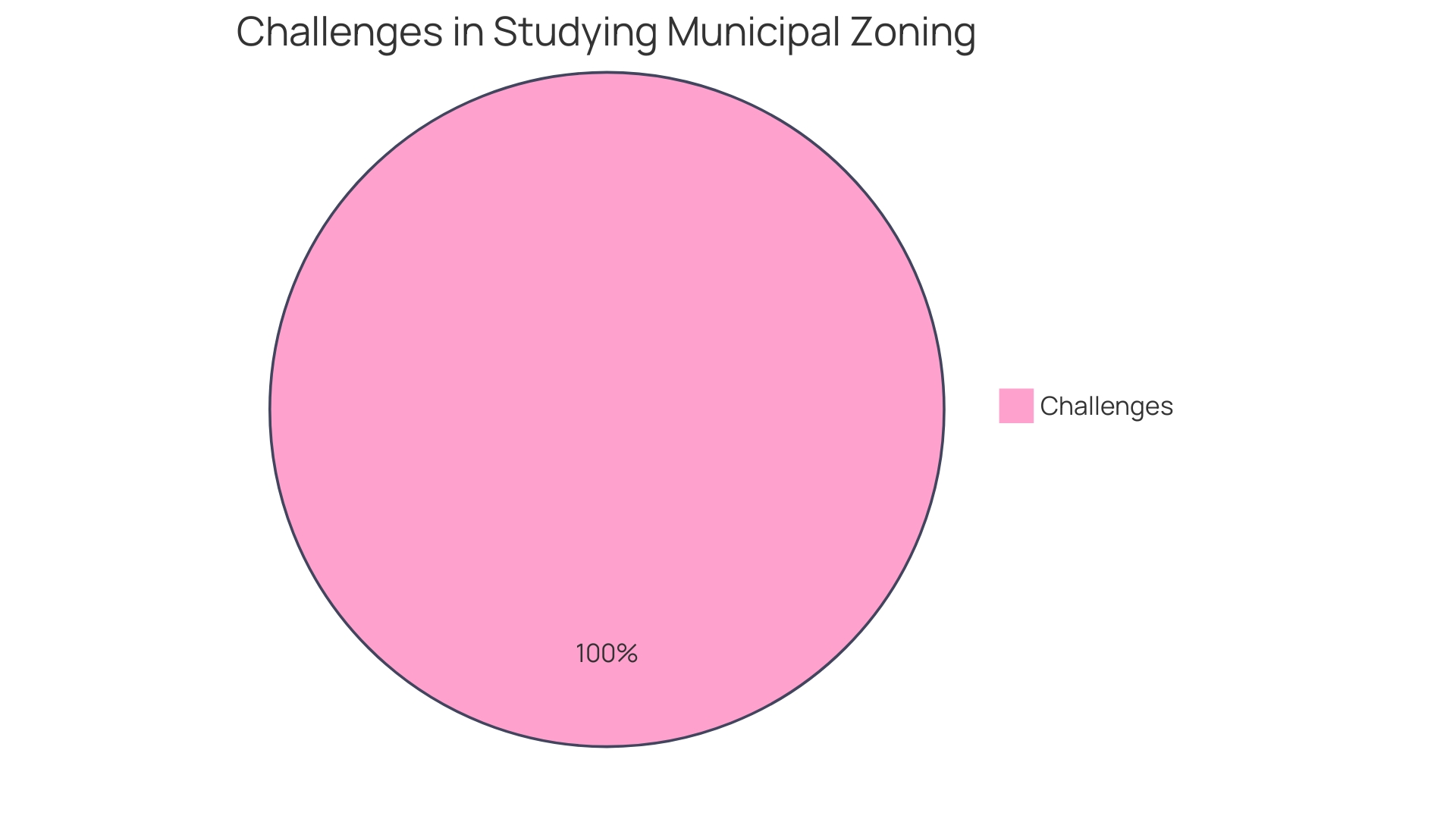
Suburban Single-Family Housing Developments
Suburban single-family dwellings are described as a standalone residential structure designed for occupation by a single household, complete with its own individual land and facilities such as a unique kitchen and separate utilities. These homes, which can take various forms including fully detached, semi-detached, row houses, and townhouses, must meet specific criteria such as having separate walls and not sharing heating or air-conditioning systems with adjacent units. As urban centers expand, these residential areas are often located on the peripheries, offering a retreat into a more spacious and tranquil suburban lifestyle. This separation from the bustling city centers caters to those seeking a quieter, more residential-focused environment, often with the added benefit of larger lots.
Recent trends have seen a change in preferences for residential properties, with the Yardi Matrix Multifamily Construction Starts report from January 2024 indicating a decrease in market rate multifamily units from 86% to 77% over the last decade, while starts for affordable residences rose from 8.4% to 13.4%. Similarly, single-family rentals have seen an increase from 0.9% to 5.8% in the same timeframe. These developments reflect a shifting landscape in suburban living, where the focus is on creating various residential choices that preserve the essence of neighborhoods while accommodating expansion.
Innovative strides in zoning modifications are being made to integrate different residential types into single-family zoned areas. For instance, the introduction of pattern books in certain zones aims to facilitate the construction of duplexes, triplexes, and quadplexes of a house-scale size and form. These guidelines provide multiple design options for building placement, orientation, massing, and parking, ensuring these new structures contribute to attractive and safe streetscapes without overwhelming the public realm with parking or resembling small apartment buildings. This approach provides homeowners with the flexibility to construct different types of residences within the single-family domain, promoting a new era of accessible dwelling strategies.
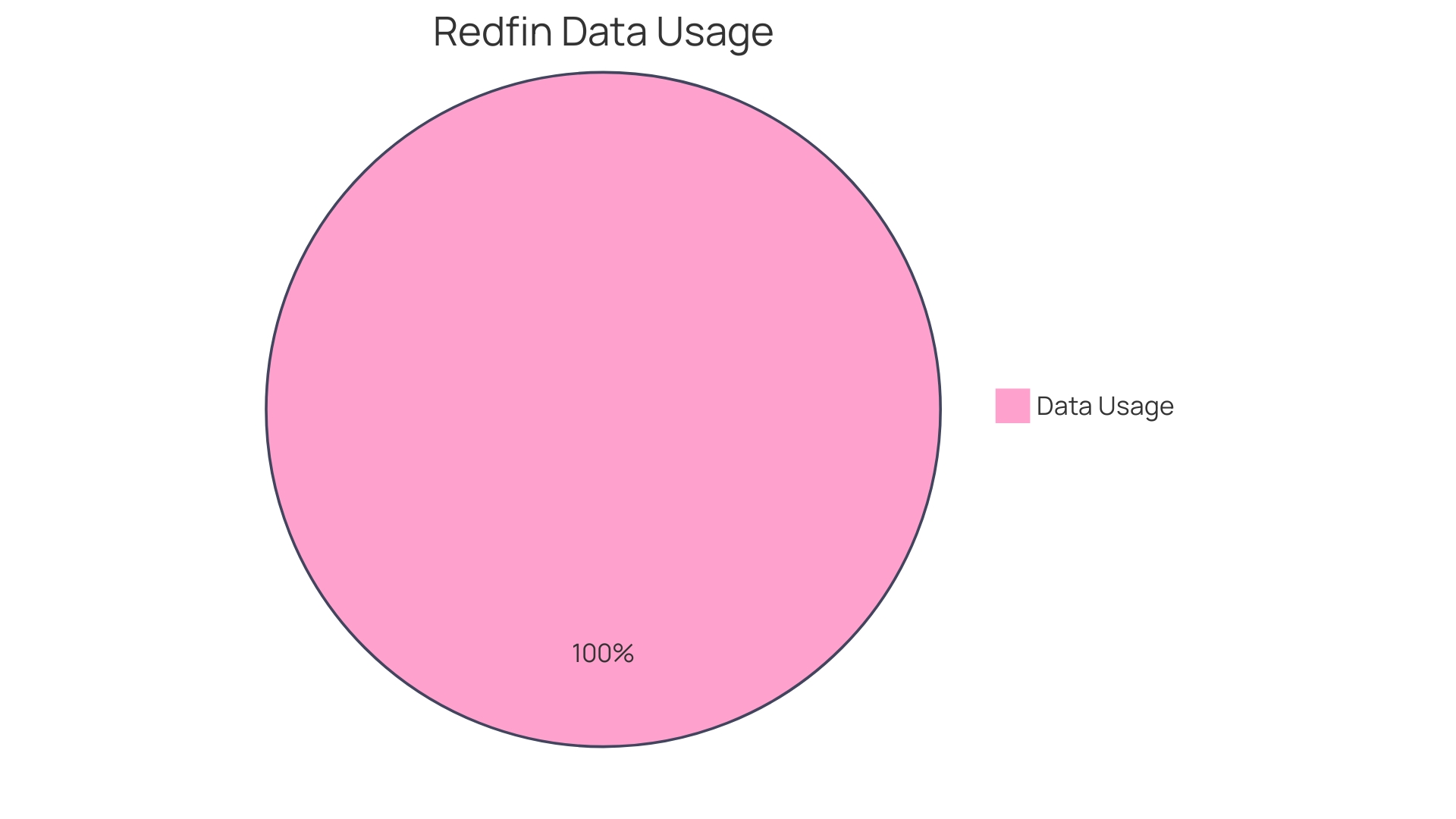
High-Rise Apartments in Urban Areas
In urban landscapes where space is at a premium, high-rise apartment buildings have become a vital solution for housing growing populations. These towering structures are not merely a response to limited land availability; they represent a strategic approach to urban planning, maximizing the number of residential units within a constrained footprint through vertical expansion. For instance, the innovative Higher Roch Tower in Montpellier, France, designed by Brenac & Gonzalez & Associes, exemplifies this approach. With a total project size of 12,600 m², this building integrates residential spaces with the natural environment, offering expansive terraces that immerse residents in the open skies and sunlight, a precious commodity in urban settings.
The trend towards vertical living is underscored by the evolution of urban growth patterns. A study published in Nature Cities analyzed decades of satellite data, revealing a significant global shift from low-rise, outward expansion to high-rise structures. This upward trajectory is most pronounced in regions like Asia and Africa, where the 2010s saw 28% of urban areas dominated by high-rise growth, a stark increase from 9% in the 2000s.
This vertical expansion is not limited to residential buildings; mixed-use structures are increasingly prevalent, blending residential, office, and commercial spaces to create multifunctional urban hubs. Such progress is crucial in facilitating human productivity and engagement by enabling faster and more convenient interactions within the urban fabric.
The burgeoning construction of high-rise apartments is evident in the U.S., where over 1.2 million new rental apartments have been built since 2020, with the New York metro area leading with 33,001 new units projected for 2023 alone. Additionally, the southern coast of Brazil is set to host the world's tallest residential tower, the Triumph Tower, which underscores the global appetite for high-rise living.
Against this backdrop, ambitious projects like The Line, a planned megastructure city in Saudi Arabia, propose alternative visions for urban living. The Line's design, a 170 km long, 500 m tall structure housing 9 million residents, highlights the innovative thinking shaping future cities, despite critiques and concerns over its feasibility.
As high-rise developments redefine city skylines, they are more than architectural feats; they represent a concerted effort to address the challenges of urbanization. These structures are a testament to the adaptability of cities, evolving to meet the needs of their ever-expanding populations through strategic land use and architectural innovation.
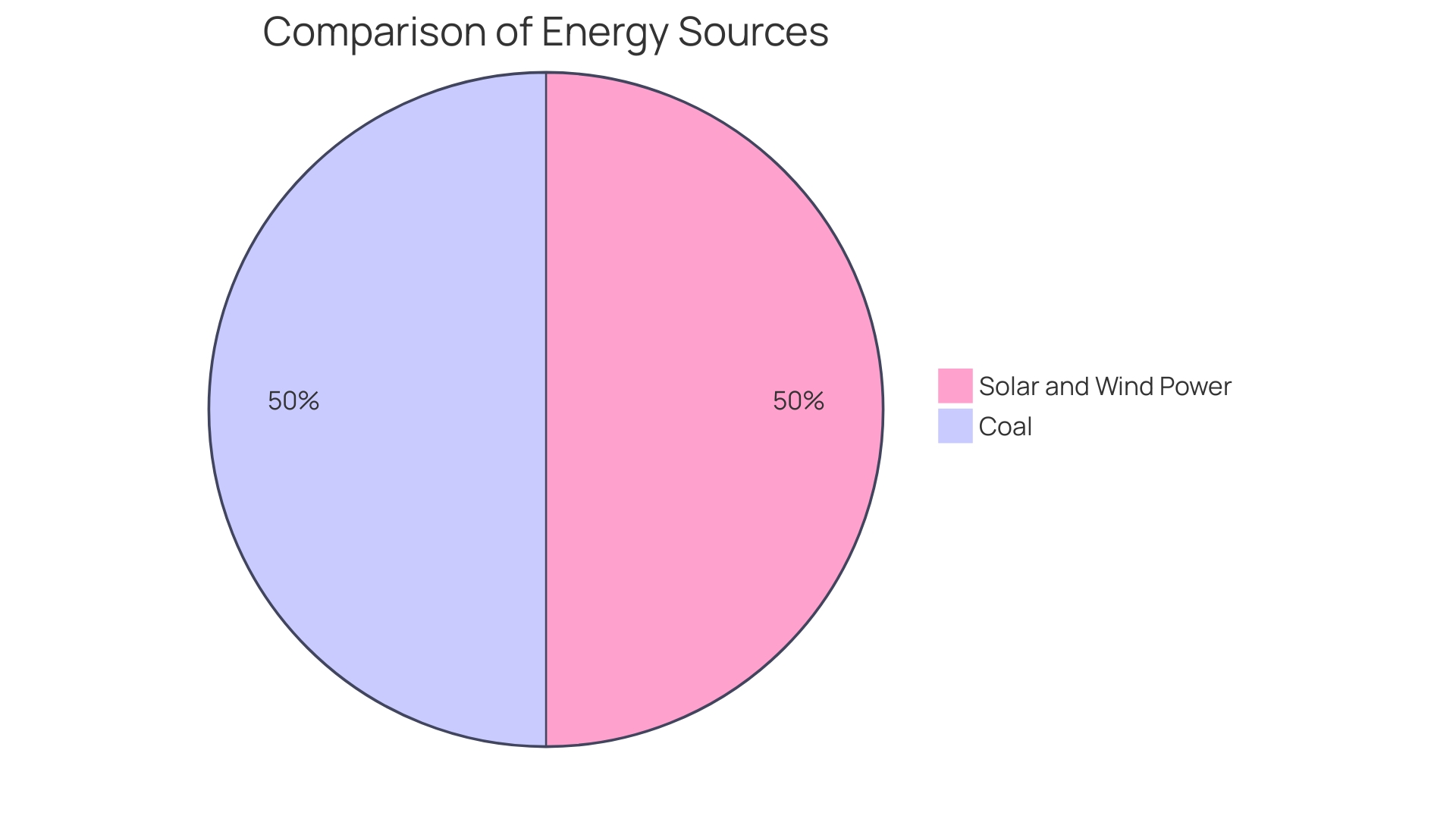
Gated Communities and Condominiums
Condominiums and gated communities are changing the way people live in residential areas with their comprehensive approach to amenities and security. A condominium, succinctly known as a condo, encapsulates individual ownership within a collective setting. Whether set within towering high-rises or nestled in smaller complexes, condos are integral units of a larger, shared property. Residents enjoy the autonomy of their private spaces while holding collective stewardship over communal assets such as idyllic parks, refreshing swimming pools, and state-of-the-art fitness centers.
The attraction of these neighborhoods goes beyond the concrete facilities; it is the unquantifiable feeling of companionship and security that truly characterizes their essence. The design is intentional, fostering neighborly interactions in garden courtyards and common areas, all while ensuring the security of personal belongings through gated access. This special combination of togetherness and privacy provides a refuge where residents can enjoy both social gatherings, like dinner parties in open-air lounges, and peaceful solitude in the comfort of their own homes.
These shared spaces are managed with the collective interest in mind, often by a homeowners association, ensuring that the quality and value of these amenities are preserved for all members to enjoy. This harmonious balance of individuality and collective living is the foundation of the condo living experience, providing a lifestyle that caters to both personal preferences and a sense of belonging.
Land Use Regulations and Zoning
Local governments enforce land use regulations and ordinances to ensure the orderly growth of communities, safeguard property values, and uphold community standards. These legal frameworks are essential in defining permissible land uses, dictating building dimensions, and setting parameters for development within designated zones. For example, California's comprehensive land use data includes 473 municipalities and 46 unincorporated jurisdictions, demonstrating the complexity and extent of land use regulation across diverse regions.
The consequences of land use regulation extend beyond urban planning to impact climate action. Urban sprawl, a byproduct of certain land use policies, contributes to a third of global greenhouse gas emissions by encouraging longer travel distances and greater car dependency. On the other hand, strategic land use reform can result in more condensed, diverse communities, decreasing travel, improving energy efficiency, and safeguarding natural carbon sinks, demonstrating the potential of land use regulation as a tool for environmental sustainability.
The impact of land use regulations on residential property markets is well-documented, with minimum plot size restrictions among the most widespread and significant statutes in the United States. These regulations have a substantial impact on the affordability of accommodations, adding to the difficulties experienced by renters and prospective homeowners alike. With 21.8 million households spending a significant portion of their income on accommodation expenses, the necessity for considerate land use regulations that encourage affordability and accessibility becomes apparent.
Historically, property ownership in America was rooted in the natural rights to life, liberty, and property, with early legal frameworks upholding the principle that property rights include the freedom to use one's land. Nevertheless, the development of land use regulations has resulted in a narrower comprehension of property utilization, frequently conflicting with the fundamental rights protected in the country's initial manuscripts.
As urban planning continues to evolve, the tension between local autonomy and statewide policy objectives remains a critical issue. Recent examples from New Hampshire and California showcase the real-time effects of land use decisions on individuals' lives and the broader housing market, underlining the importance of reconciling local authority with overarching goals like housing affordability and climate action.
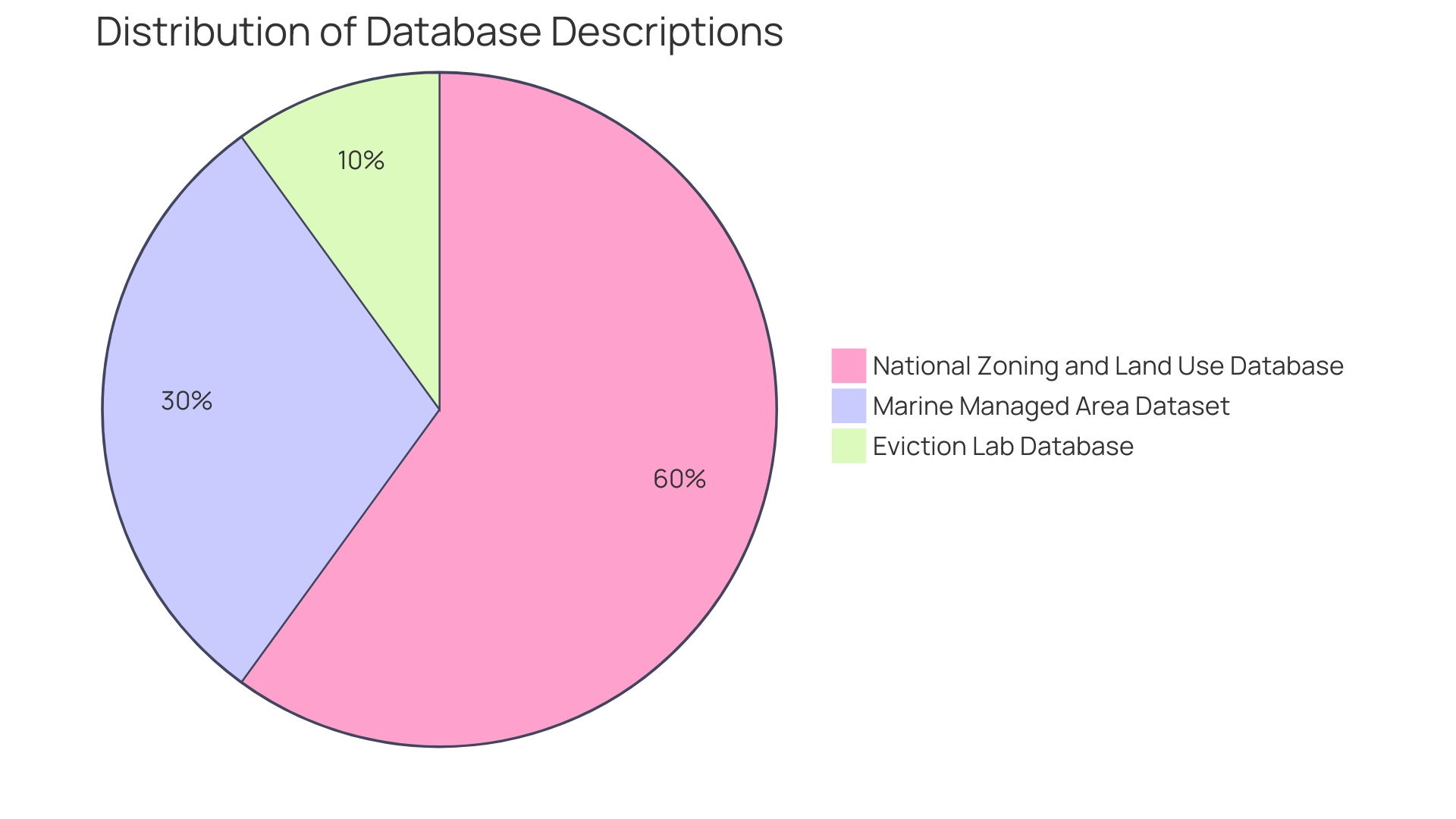
Role of Local Governments in Residential Land Use
Local governments, such as municipal councils and urban planning committees, have a crucial impact on the arrangement of residential land use through their power to create land use rules, assess proposals for growth, and authorize required licenses. These entities are responsible for managing the expansion and progress of their communities while safeguarding the character and livability of neighborhoods. A key aspect of local government oversight involves distinguishing types of land use approvals, such as 'by-right' approvals for small projects that adhere to existing codes, versus discretionary reviews for larger developments requiring multiple public hearings. Furthermore, land use planning not only considers aesthetics and orderliness of cities but also influences broader topics like affordability of residences, climate action, and transportation efficiency. For example, reforms related to land use regulations, such as those recently enacted in California, aim to alleviate the housing crisis by allowing for increased density and accessory dwelling units. This approach to urban planning is informed by an understanding that a mix of land uses reduces travel distances, promotes healthier lifestyles, and fosters more sustainable societies. Nevertheless, the intricacy of regional land use regulations, with over 2,600 municipalities throughout the United States, each with their own policies, poses considerable difficulties in developing coherent strategies that promote both development and quality of life.
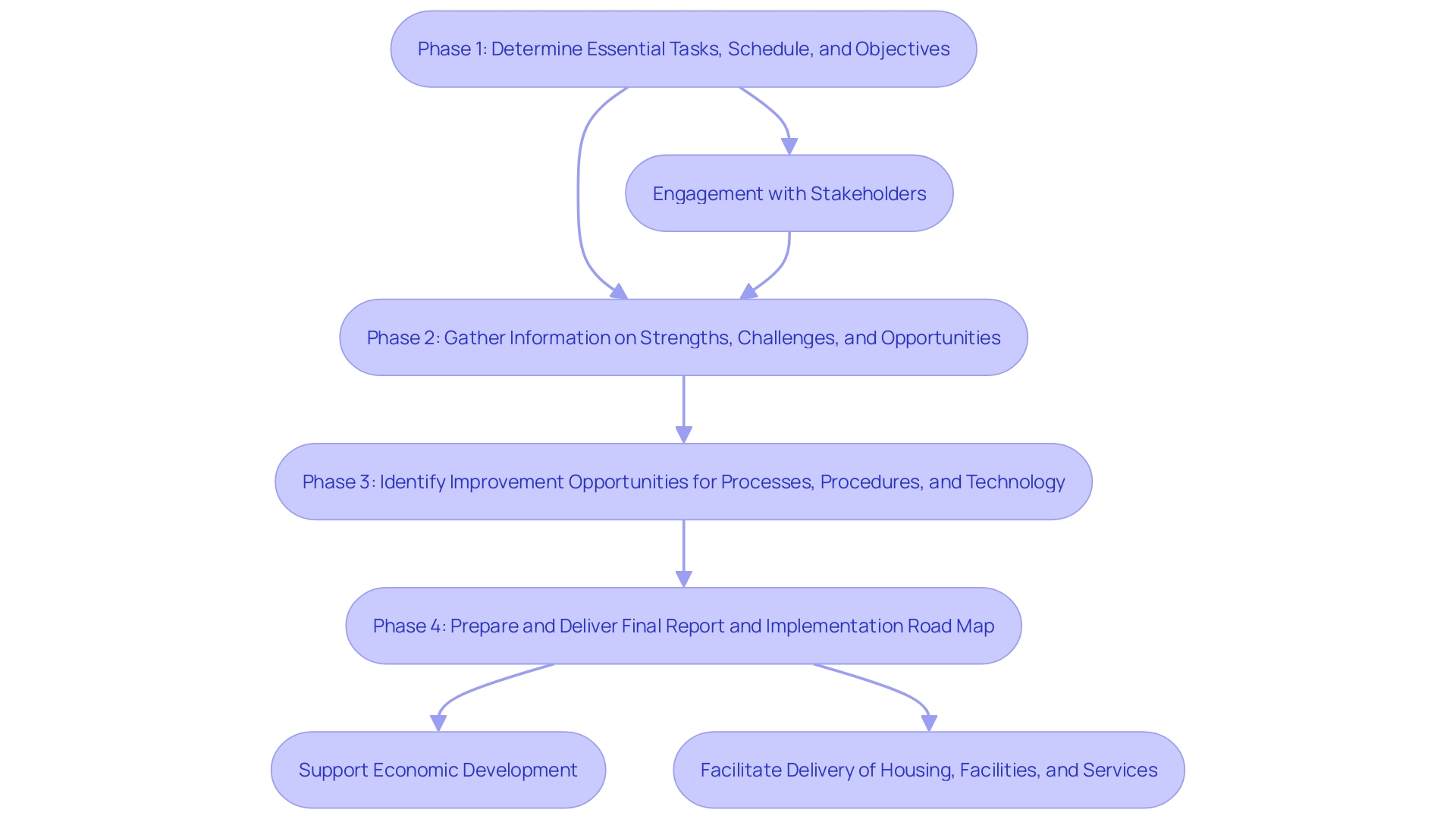
Zoning Planning and Designation
Local governments have a crucial impact in shaping societies by defining how land within their jurisdiction can be utilized. The designations they create are more than just labels; they are a reflection of the vision and strategic planning for growth. Each zone, be it residential, commercial, or industrial, has its own set of permitted uses that align with the locality's long-term objectives.
In Minneapolis, for instance, a comprehensive reform of land use regulations was motivated by a compelling combination of factors, such as the pressing demand for more affordable accommodations, the advancement of racial equity, and environmental concerns. The reforms were a result of extensive community engagement, ensuring that the voices of those typically marginalized in land use discussions were heard, particularly those affected by restrictive zoning.
Furthermore, to promote the development of various residential alternatives like duplexes, triplexes, and quadplexes, certain jurisdictions have implemented creative resources such as a pattern book. This guideline helps developers in creating homes that seamlessly integrate into the neighborhood fabric while maintaining a focus on house-scale construction and contributing positively to the area's streetscape.
Recent changes in city regulations, like in Charlottesville, demonstrate a increasing pattern to simplify the process of development, making it more convenient to establish units that are affordable. The implementation of these Development Codes is a component of wider efforts aimed at offering more comprehensive housing solutions and catering to the varied requirements of societies.
These changes in land use practices are indicative of the evolving nature of urban planning. They highlight the importance of continued learning and adaptation, as planners and policymakers leverage new technologies like GIS, databases, and various programming languages to inform their strategies and decisions.
Land use regulations and property ownership rights, along with land planning, are crucial factors in shaping the daily lives of residents and the economic well-being of societies. While urban planning faces ongoing challenges like housing affordability and social equity, the incorporation of extensive data, insights from the local population, and legal structures grows more crucial in promoting sustainable and fair progress.
Development Review and Permitting
Local governments have a crucial role in shaping the landscape of progress, carefully assessing proposals to ensure they comply with zoning regulations and cater to the wider interests of society. This scrutiny includes assessing the impact on traffic flow, infrastructure demands, and environmental preservation. Only when a proposal satisfies all regulatory requirements and community needs does it receive the stamp of approval in the form of a building permit. The process is complex and multifaceted, often involving a phased approach where initial phases focus on understanding the strengths and challenges of the application procedure. Subsequent phases aim to identify and design improvements, culminating in a comprehensive report and a strategic implementation plan to support economic growth.
With the real estate market facing volatility, from fluctuating interest rates to evolving retail landscapes, developers and local governments alike turn to agreements to navigate these uncertainties. These agreements set forth the conditions of a development project, balancing the needs for public benefits with the developers' objectives. They act as a safeguard against possible changes in area regulations or new rules, guaranteeing the continuity and compliance of the project with the initial agreed conditions.
Moreover, recent advancements in technology have transformed the review process, with some cities transitioning from manual, paper-based systems to sophisticated digital platforms that streamline the entire procedure. This digital shift not only increases efficiency but also enhances transparency and accountability in how cities manage land use planning.
As governments are recognized by the U.S. Census Bureau for their autonomy and the ability to manage budgets and levy taxes, they are also tasked with the responsibility to wisely oversee growth that aligns with public good. This includes considering the wider consequences of land use regulations, such as their impact on climate change and urban congestion. Local governments must weigh the benefits of development against the need for sustainable urban planning that encourages alternative transportation modes and addresses the concerns of community members.
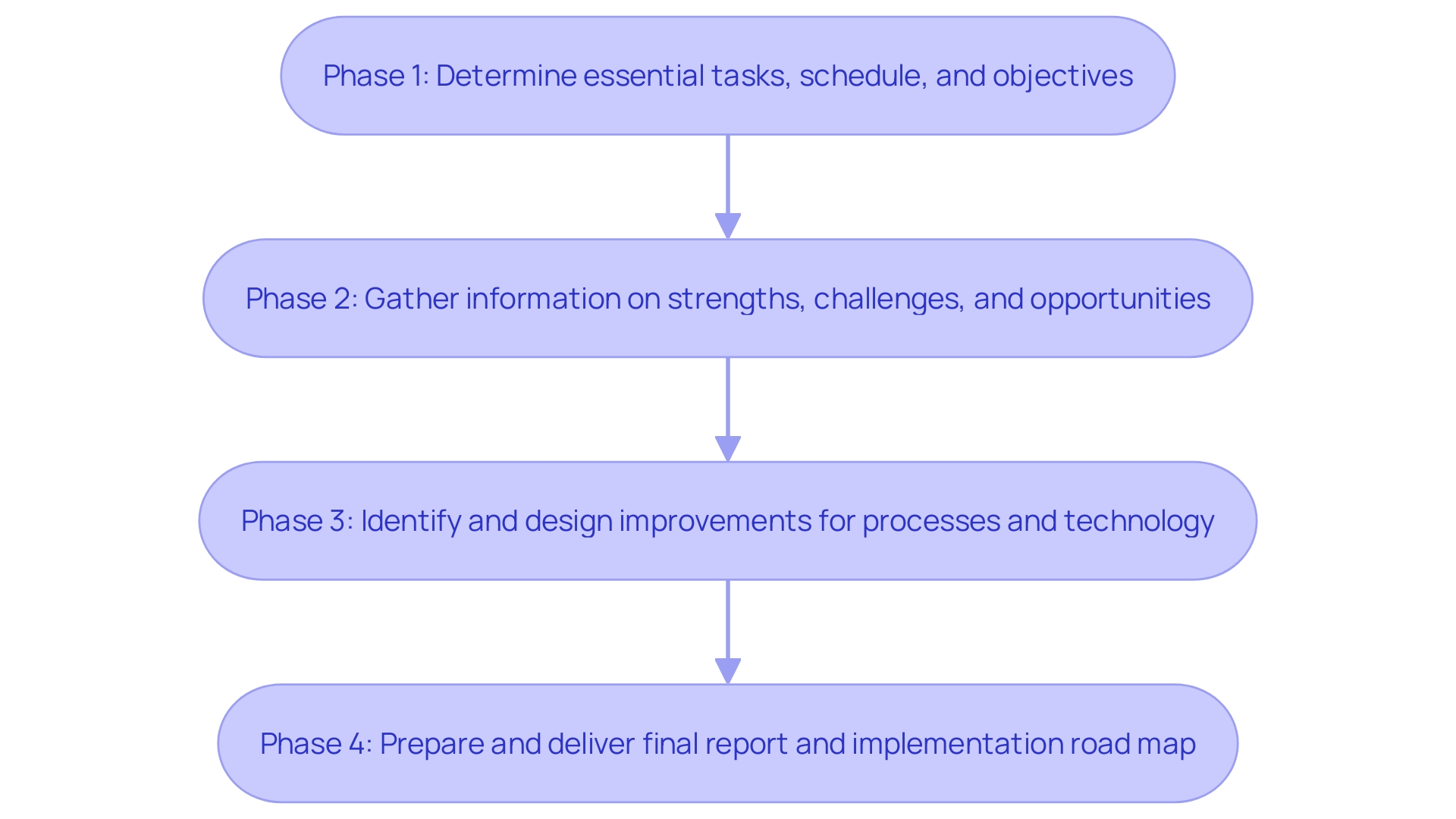
Key Concepts in Residential Zoning
Zoning is a pivotal aspect of urban planning, determining how land can be utilized within different jurisdictions. Fundamentally, the classification of areas determines specific uses, like residential, commercial, or industrial, and involves requirements for the kinds of structures permitted, their heights, densities, and even the arrangement of trees. The complexity of these regulations can be daunting, especially considering that the United States alone is home to thousands of local governments, each with its own set of lengthy municipal codes.
California, for example, demonstrates the diversity in land use practices, with data collected on land use regulations across its 473 municipalities and 46 unincorporated jurisdictions, revealing varied approaches to single-family-only land use. These regulations can greatly influence the supply of dwellings, frequently restricting construction in areas with high demand and impacting the availability of affordable accommodations.
Recent reforms in cities like Charlottesville indicate a movement towards more adaptable land use regulations to promote the development of affordable housing. These efforts highlight the significance of comprehending land use regulations not only as administrative obstacles but as instruments that mold the very structure of our communities.
The changing terrain of land use planning highlights its function as a crucial regulatory authority of local governments. With research indicating that over 90% of building consents in places like New Zealand translate into actual construction, changes in land use regulations can lead to the creation of thousands of new homes, as was the case in Auckland after regulations were relaxed.
For those maneuvering through this intricate landscape, it is crucial to understand the intricacies of land use regulations and their significant effects on real estate development, urban planning, and the entitlements of land proprietors.
Residential Zoning Districts
Residential zoning districts are categorized by the density of housing they permit, such as low-density (R-1), medium-density (R-2), and high-density (R-3). These designations are crucial as they set parameters for lot sizes, building heights, and setbacks, shaping layouts and determining how neighborhoods develop. Zoning serves as an urban planning tool to ensure that new growth is compatible with existing community structures and does not interfere with the designated uses of surrounding districts.
Comprehending the implications of land use regulations is complex, as exemplified by California's analysis of single-family-only zoning restrictions, which involved parsing data across multiple municipalities to assess the impact on the availability of residences. Zoning codes are extensive and intricate, often contained within lengthy municipal documents that can be challenging to interpret accurately, even for advanced language models. This complexity emphasizes the requirement for thorough scrutiny and understanding when contemplating implications on property rights and development potential.
There is a broad consensus that zoning laws significantly influence the supply of accommodations, potentially restricting construction in desirable areas and thus affecting affordability. For instance, recent legislative actions in California, such as SB 9, aim to address these issues by enabling increased construction of residences through lot splits. This legislative intent aligns with the prevailing theory that a lack of accommodation contributes to increased rents and homeownership expenses.
Efforts to improve, such as those in Minneapolis, which involved members of the community who are usually left out of discussions about land use, have demonstrated that alterations in land use regulations can significantly impact the affordability and availability of homes. Similarly, St. Paul has followed suit, increasing permissible housing units per lot to promote neighborhood-scale density.
Zoning's history in the United States is rooted in the fundamental right to property, which was initially understood to include the inherent right to use one's property. Nevertheless, the development of land use regulations has resulted in a intricate system where the utilization of property is heavily controlled by government-established districts.
The impact of land-use regulation and its effect on daily life cannot be overstated; it dictates where people live, work, and engage in leisure, all within government-prescribed areas. As urban planning progresses, it remains an essential element of property growth and influences the fundamental structure of societies and the entitlements of property holders.
Setbacks and Building Envelopes
Grasping the equilibrium between progress and upholding community standards is crucial. Setbacks and building envelopes are critical tools used to establish this equilibrium. By determining the minimum distance between a structure and the property boundary, setbacks ensure that buildings are well-spaced, providing residents with adequate privacy, access to sunlight, and proper air flow. These regulations also play a significant role in preserving the visual appeal and character of a neighborhood, as well as preventing overdevelopment.
These principles are not only theoretical but also applied in real-world scenarios, as evident in the case of an American residing in Japan. In the pursuit of an ideal property near Chiba Prefecture's beaches, the individual faced the complexities involved in selecting a suitable location that adhered to such regulatory measures. The journey involved meticulous consideration of numerous properties to find the ones that matched their criteria, illustrating the importance of understanding land zoning and use regulations in property acquisition.
Furthermore, the urban planning landscape is shaped by different levels of policymaking. For example, recent changes in Ontario's urban planning approaches, such as the elimination of mandatory car parking regulations in regions with excellent access to public transportation, demonstrate the influence of local decisions on the process of progress and the quality of life in the community. These modifications highlight the need for a thorough understanding of both past and present regulations regarding land use in order to successfully navigate the intricacies of acquiring property and managing it effectively.
Non-Conforming Uses and Variances
Within the realm of land zoning and use regulations, 'non-conforming uses' epitomize properties that, while predating current zoning laws, do not align with the latest land use restrictions. This discordance is exemplified by the case of Orlando Capote's home in Coral Gables, Florida. His Mediterranean-style house, situated amidst a modern real estate project, highlights the challenges faced when older properties are engulfed by new urban planning directives. Capote's struggle over two decades to preserve his family's home against the encroaching development reflects the complexities of maintaining non-conforming properties in a changing landscape.
When property owners seek to deviate from strict land use regulations, they may petition for 'variances' These exceptions, though not lightly given, provide a legal avenue for property owners to utilize their land in ways not typically permitted under the current zoning code. The process of obtaining a variance is meticulous, requiring a thorough review and approval procedure to ensure that the exception does not detrimentally affect the community or the environment. This aspect of land use policy highlights the importance of transparent and accountable regulation, as mentioned in regulatory studies by experts like Wayne Crews, illustrating the significant 'hidden tax' of compliance and the consequences of regulatory burdens on property rights and growth.
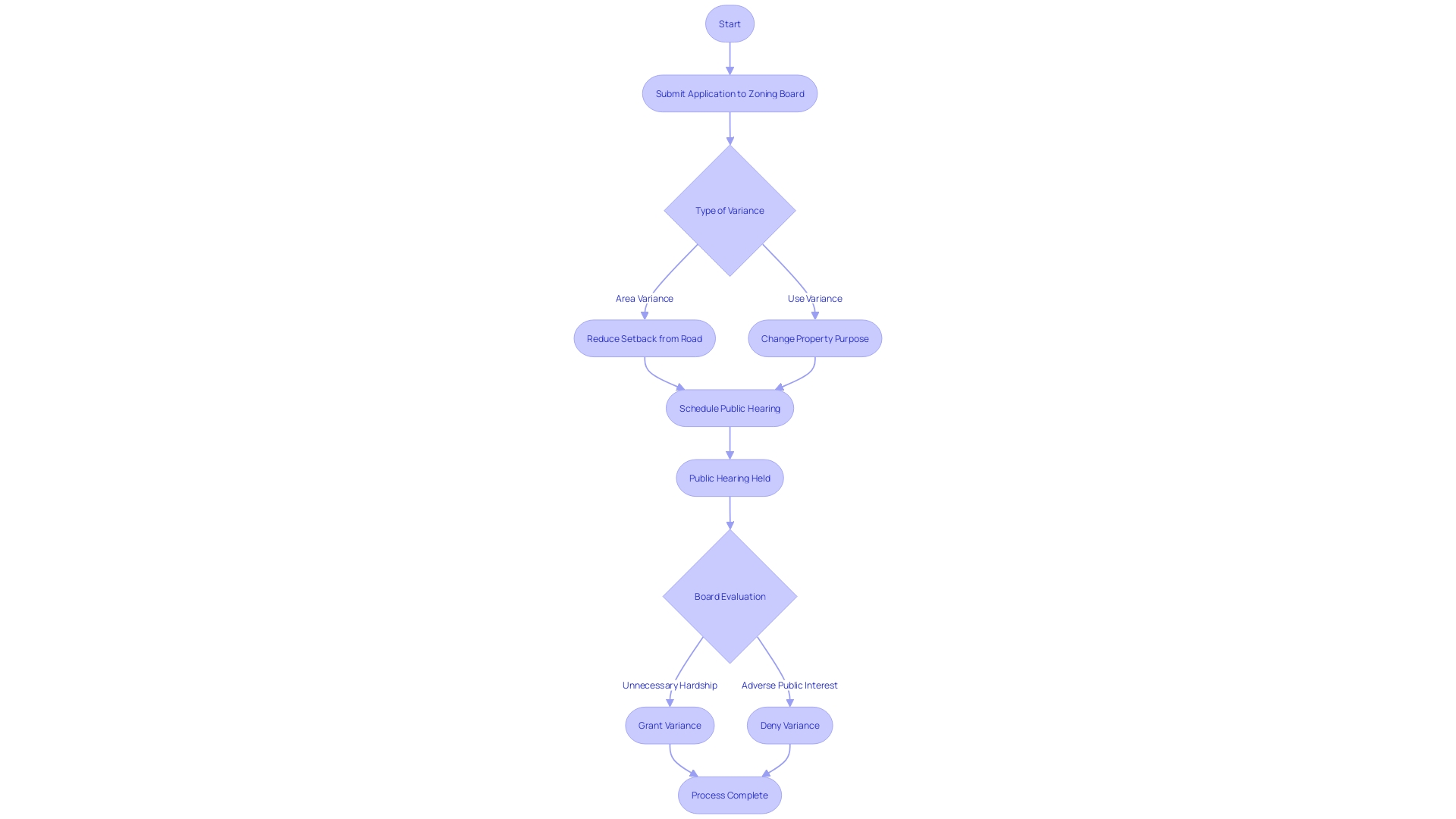
Vested Rights and Zoning Classifications
Vested rights protect property owners by maintaining their entitlements, in accordance with the land use regulations that were in effect at the time of their establishment. This legal concept is crucial for property owners like Martin and Anthony George of Brentwood, Missouri, who have inherited a family-built property that not only signifies their heritage but also serves as the cornerstone of their thriving businesses. Similarly, contractual agreements serve as a pivotal instrument for developers navigating the volatile terrain of commercial real estate. These contracts between developers and local governments set forth the development rules and conditions, offering a sense of stability against unpredictable regulatory shifts.
Moreover, land use classifications, while differing across regions to reflect community-specific objectives, have substantial implications on property rights and land usage. The Institute for Justice's Zoning Justice Project highlights the historical change in land use practices, promoting property rights and seeking to address the social and economic problems that arise from existing land use laws. This is reflected by the groundbreaking reform in Minneapolis, which, through inclusive engagement, aims to tackle affordability of accommodations and racial justice, establishing a model for other municipalities.
Amidst evolving transportation trends and policies related to residential accommodations, like California's SB 9 aimed at enhancing affordability through augmented housing supply, the significance of development agreements and land-use regulations grows more prominent. The situation in Claremont, New Hampshire, where tenants faced eviction due to code violations, illustrates the real-time impact of land use regulations on shelter and the urgent need for balanced solutions that consider both individual liberties and community planning.
Affordable Housing Requirements
Affordable accommodations are a crucial concern for low-income families, where local governments are responsible for formulating policies to guarantee residential options are accessible for those in need. Inclusionary regulations, which require a certain percentage of new construction to be affordable, density bonuses to allow more units on a parcel of land, and financial incentives for developers are all strategies used to bolster the supply of affordable units. A prime example of such efforts can be seen in Minneapolis, where the promotion of affordable accommodations, racial equality, and environmental advantages resulted in a major reform in land use regulations. This reform, initiated by engaging communities typically excluded from land use discussions, has shown preliminary success in moderating housing prices and building activity.
In contrast, exclusionary land use laws have been shown to perpetuate economic and racial segregation, which in turn affects school segregation and ultimately children's educational opportunities. Experts largely agree that these laws are detrimental to society, yet there is a common belief among politicians that changing them is nearly impossible due to NIMBYism. The Century Foundation has highlighted the educational and societal impacts of these zoning policies in New York State, emphasizing the need for change.
Houston, Texas stands as a model of affordable home production, largely due to its minimal lot size requirements, allowing for the construction of cost-effective homes. This approach has resulted in a substantial rise in affordable accommodation, unlike in other major cities where restrictive land-use policies have pushed up expenses.
California's recent surge in construction of dwellings, which has reached a 15-year high, can be attributed to a focus on accountability and enforcement of laws related to residential units. This has resulted in over 7,500 new dwelling units, including nearly 2,800 affordable ones. Local mayors from Saanich and Cumberland have also recognized the significance of multi-unit dwellings and the necessity for zoning updates to tackle contemporary residential challenges.
In terms of affordability, the U.S. Department of Housing and Urban Development (HUD) defines accommodation as affordable when a household spends no more than 30% of their gross income on rent and utilities. However, over 22 million households surpass this limit, and almost one in six families are heavily burdened by accommodation expenses. Dealing with this problem necessitates significant investments in rental assistance, emergency renter aid, healthcare and accommodation vouchers, and support for the homeless. Recent federal legislation, such as the Inflation Reduction Act and the Infrastructure Investment and Jobs Act, provides funding to communities to create affordable and climate-resilient dwellings near public transportation, contributing to both economic success and environmental sustainability. Incentives for upzoning and sustainable construction practices are also part of the solution to make accommodations more affordable and reduce the environmental footprint.
Design Review Ordinances and Guidelines
Design review ordinances and guidelines play a pivotal role in shaping the visual and functional quality of urban residential projects. These regulations ensure that new constructions harmonize with the existing architectural fabric, upholding the character of neighborhoods. Comprising criteria for architectural style, building materials, and landscaping, they guide developers to integrate new structures seamlessly with their surroundings. An instance of their impact is noticeable in Seattle's design review procedure, which has sparked discussions regarding its effect on residential construction. Despite the intention to preserve neighborhood aesthetics, it has at times been used to impede new housing projects by enforcing minute details such as material colors and landscape orientation. These requirements have not only hindered progress but have also increased costsâburdens that ultimately affect renters.
In consideration of such challenges, cities are evolving their review policies. The application process review (DAPR) is an initiative involving multiple phases aimed at refining such regulations. Starting with a comprehensive analysis of current strengths and weaknesses, it progresses to identify and implement improvements in procedures and technologies, culminating in a strategic plan that supports economic development and community needs.
The importance of design review goes beyond aesthetics; it addresses the socio-economic aspects of residential structures. For instance, the HUD's Manufactured Home Construction and Safety Standards have been updated to promote affordable housing options, reflecting the Administration's commitment to addressing the housing supply gap. Similarly, the Dot's expansion of loan guarantee programs like TIFIA and RRIF showcases creative methods to finance residential projects near transit hubs, thus promoting transit-oriented growth.
The pre-approved building plan programs exemplify successful strategies that align with city visions while addressing unique local conditions. These programs not only streamline the process but also foster consistency and predictability, essential for fostering growth that meets community needs without excessive delays.
Together, these strategies and policies demonstrate the ever-changing connection between urban planning and the creation of residential areas. By continuously adapting design review guidelines and augmenting them with supportive housing policies, cities can create environments that are both aesthetically pleasing and responsive to the growing demand for accessible and affordable housing.
Takings Clause and Property Rights
The principle of just compensation for the taking of private property is deeply rooted in American jurisprudence, reflecting a long-standing respect for property rights. This respect for ownership is codified in the Takings Clause of the Fifth Amendment, which requires the government to provide "just compensation" when it takes private property for public use. The eminent domain process, which allows the government to acquire private land for public purposes, must satisfy four critical criteria: it must serve a public use, provide just compensation, follow due process, and demonstrate necessity.
Cases such as Causby v. United States illustrate how government activity, such as excessive noise from military flights, can lead to a de facto taking of property. When Thomas Lee Causby's chicken farm was rendered inoperable due to the disturbance from nearby airport traffic, it highlighted the extent to which government action can impinge on private property use.
Recent Supreme Court advancements indicate a continuous improvement of what constitutes a taking. The Nollan and Dolan decisions established tests for essential nexus and rough proportionality, which are used to evaluate whether conditions placed on development permits constitute a taking. The upcoming case of George Sheetz, who challenges the imposition of a traffic-mitigation fee, reflects the Court's willingness to scrutinize legislative actions to ensure they do not bypass the constitutional requirement for just compensation.
The implementation of eminent domain and the Takings Clause continues to be a dynamic area of law, as seen in contemporary discourse and cases before the Supreme Court. Property rights advocates, like Margaret Byfield, warn against the use of eminent domain as a tool against private property owners, particularly in the context of large-scale renewable energy projects. These concerns underscore the significance of the Takings Clause as a bulwark against uncompensated government encroachment on private property rights.
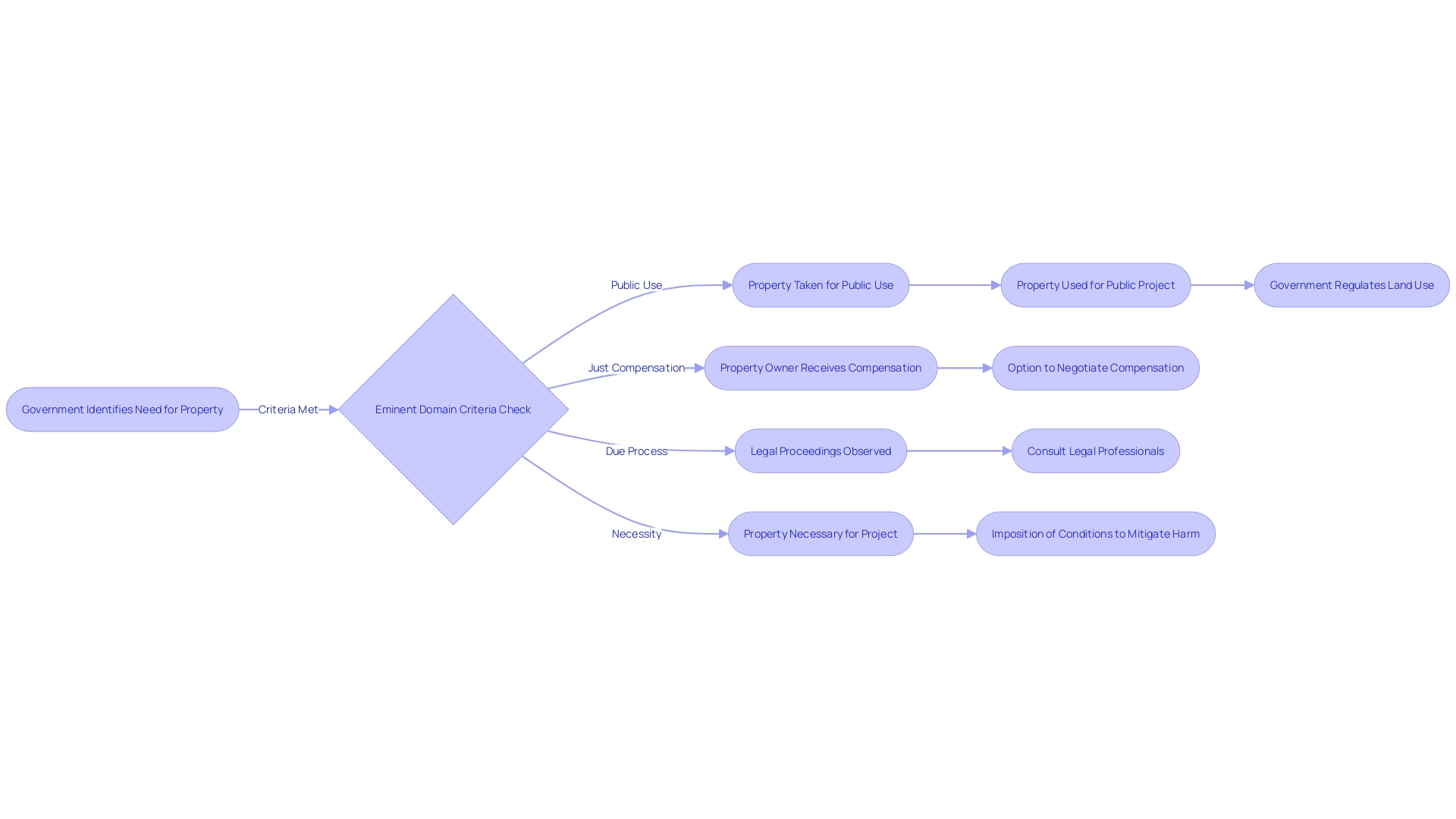
Conclusion
In conclusion, residential land use is shifting towards sustainable and inclusive approaches. The traditional model of single-family homes is being reevaluated due to its contribution to urban sprawl and environmental impacts. Compact, mixed-use communities are now seen as a more efficient and sustainable approach, promoting better health outcomes, housing affordability, and reduced travel distances.
Innovative strategies, like pattern books for attainable housing, are emerging to address these challenges. These guidelines streamline the construction of diverse housing options that blend into existing neighborhoods, contributing positively to the public realm. Repurposing surplus properties and utilizing existing resources can help mitigate housing shortages and promote sustainable urban development.
Zoning regulations play a crucial role in shaping residential land use. Recent zoning reforms highlight the importance of inclusive dialogue and community engagement in addressing restrictive practices. Multifamily residential developments are vital in addressing housing shortages and promoting sustainable living.
They offer affordable housing options and reduce travel distances, fostering healthier lifestyles.
Mixed-use residential land use creates thriving communities that prioritize convenience, productivity, and sustainability. They offer diverse housing options and foster a sense of community through shared amenities. Local governments play a pivotal role in shaping residential land use through zoning regulations and development review processes.
Understanding zoning regulations, setbacks, and building envelopes is essential for property owners and developers. These regulations ensure compatibility with existing structures and community standards. Affordable housing is a critical issue, and policy interventions like inclusionary zoning and financial incentives can help address it.
In summary, residential land use is evolving towards sustainability and inclusivity. Compact, mixed-use communities and diverse housing options promote affordability and better quality of life. Local governments play a crucial role in shaping residential land use, and understanding zoning regulations is essential for successful development.
By balancing individual household needs with broader goals of sustainability and community well-being, we can create more sustainable and inclusive urban environments.




